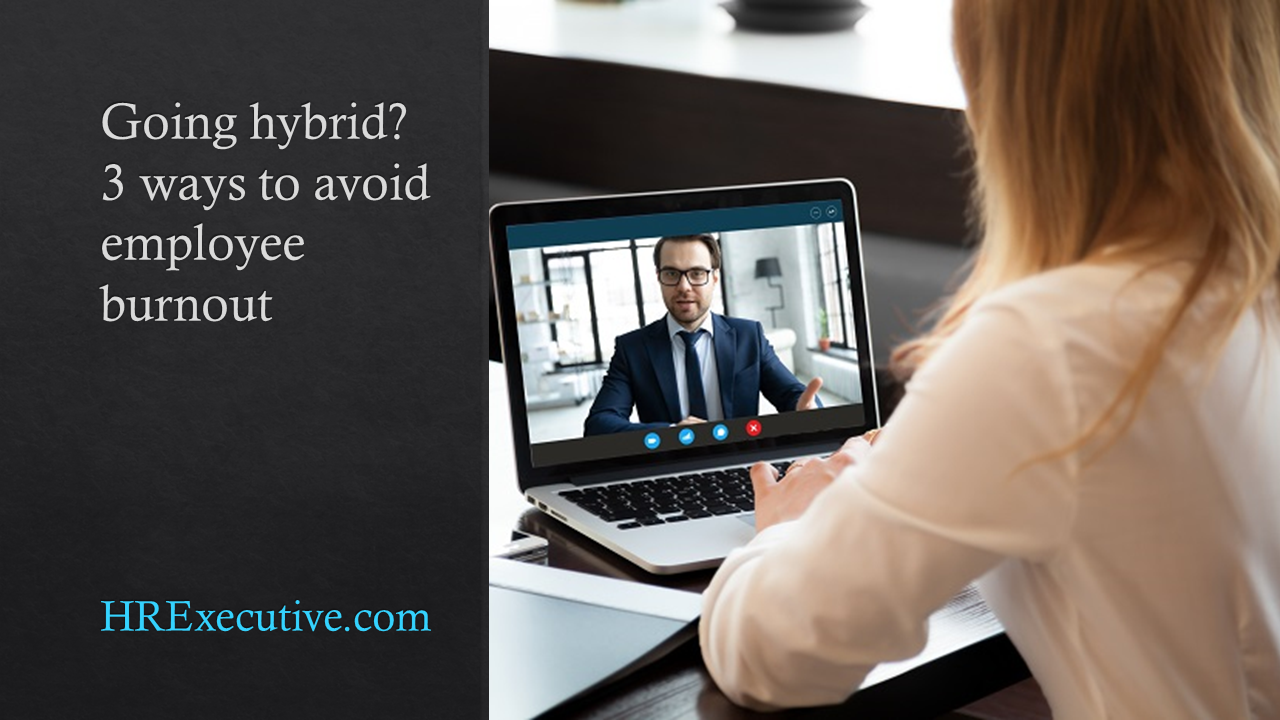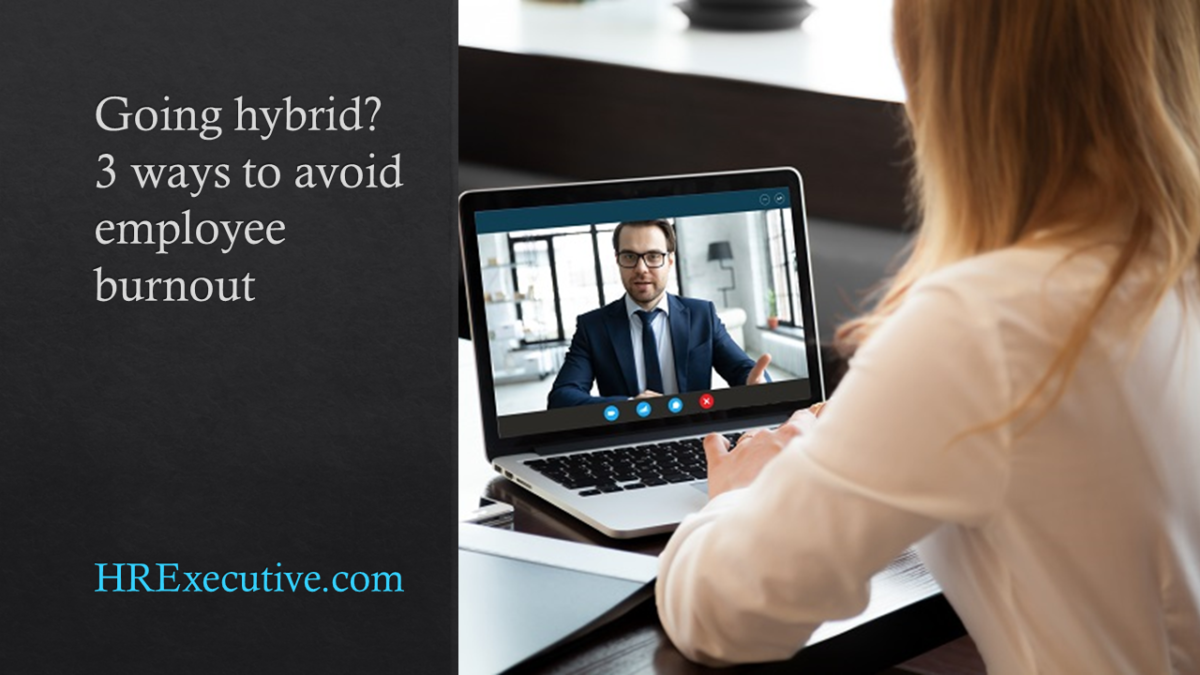On March 4, 2020, Zoom Chief People Officer Lynne Oldham was driving on Route 101, heading to a meeting in San Francisco, when she got “the call.” Company leaders were brainstorming how to keep employees safe amid the growing coronavirus crisis. At the time, 85% of “Zoomies” worked in the office, and Oldham started strategizing for how to get them home safely and effectively over the coming week or so—but the leaders on the other end of the call suggested they make the move that day.
By the time she did a U-turn and looped back to San Jose, Oldham was met with a “brigade” of employees walking out of the building carrying office chairs and equipment.
Now, she recalls that seminal day in a larger, symbolic context: as the moment HR leaders were given the opportunity to press pause, make a big U-turn and reconsider everything they had been doing—primarily when it comes to remote work.
Nearly a year-and-a-half into the pandemic, employers are at a “tipping point” on that front. Oldham, a more than 20-year HR veteran, says previous on-site mandates “proved archaic” during the pandemic, and employers are finally recognizing that flexible work situations are the key to future organizational success.
 “[Employees] are coming to the realization they want a different kind of life post-pandemic,” she said earlier this week during REMOTE by GitLab, a virtual conference exploring the future of work, culture and inclusion. She cites one Zoom employee, Harry, who previously traveled frequently for work but said he shared more meals with his wife in the first two months of the pandemic than he had in the preceding five years. Scores of recent surveys have shown that sentiment is shared widely, with some finding that up to three-quarters of employees believe flex work is the new currency to attracting and retaining top talent, Oldham says.
“[Employees] are coming to the realization they want a different kind of life post-pandemic,” she said earlier this week during REMOTE by GitLab, a virtual conference exploring the future of work, culture and inclusion. She cites one Zoom employee, Harry, who previously traveled frequently for work but said he shared more meals with his wife in the first two months of the pandemic than he had in the preceding five years. Scores of recent surveys have shown that sentiment is shared widely, with some finding that up to three-quarters of employees believe flex work is the new currency to attracting and retaining top talent, Oldham says.
“Employees are willing to change jobs in the current economic environment, so [flex work] is a game changer,” Oldham says, adding that it needs to be “front and center” in an organization’s talent strategy moving forward. “Smart, forward-thinking companies know they’re in a stealth war for talent.”
See also: Bersin-8 factors to remember when creating a hybrid plan

Lynne Oldham
So, how do such companies keep the successes of pandemic-driven remote work alive after the crisis subsides? Oldham says now is the time to assess what worked and what didn’t and the time to build a flexible work strategy that embeds those lessons.
She cited three particular realities Zoom is planning to bring forward into its post-pandemic workplace:
Talent sourcing: As demand for video services like Zoom exploded last spring, the organization had to staff up quickly. Since the pandemic started, it has brought on an average of 150-200 new employees per month—more than doubling its workforce from 2,400 pre-pandemic to 5,000 today. Overnight, the organization suddenly began hiring all-remote employees, which Oldham says opened up a world of possibilities—for instance, minority candidates who may not have lived in the geographical area around Zoom locations, LGBTQ applicants who may face increased pressure to conform to gender norms in on-site workplaces, and differently-abled workers who benefit from their at-home accommodations. “Hiring from anywhere” has created “exciting” opportunities to diversify the workforce and is something Zoom plans to continue, she says.
Onboarding: Before the pandemic, Zoom brought new employees on site for a “weeklong extravaganza, dog and pony show” that involved travel, hotel stays and days of training, Oldham says. When onboarding had to go virtual, she says, the company’s HR team decided to turn the concept “on its ear,” reinventing the process with a renewed focus on culture. The first day of remote onboarding, held every Monday, is now considered an “emotive day”—focusing not on logistics, benefits or products, but rather on how employees can live the Zoom culture. Using popular Zoom tools like breakout rooms, polling and annotation, new hires discuss topics like, “When was the last time you delivered happiness?” and learn how such concepts will connect to their work at Zoom.
Equality: For the first time, employees across all levels, locations, demographics and more are equal because on a computer screen, she says, there’s “equality of head size.” No more are employees deferring to the person at the head of the table, nor are junior employees being forced to stand off to the side. Workers have more control over their presence in a meeting—they’re able to turn on or off the camera or microphone and are able to participate in chats. Looking ahead to a workplace that will have some employees in person and others remote, Oldham says Zoom plans to be intentional about ensuring all workers feel like they’re on level playing fields in collaborative settings.
These and other strategies will require significant investment in tech—along with buy-in from leadership.
“As HR leaders plan for their teams to shift their collective mindset and embrace a remote-first or flexible work environment, executive alignment is a foundational step,” says Betsy Bula, all-remote evangelist at GitLab. In fact, GitLab recommends that, for hybrid teams, executives stay out of the office as much as possible. “Signals speak louder than policies, so having your leaders intentionally invest their own time into working remotely will demonstrate your commitment to flexible work. This will also allow the leadership team to understand the remote employee experience and quickly identify gaps in your communication practices, workflows and processes.”
It’s work that’s needed, Oldham says, in light of the forecasted “Great Resignation”—as reckonings on everything from health to passion projects to a preference for remote work are going to have employees “turning their backs on the 9-to-5 office grind.”
To hang onto as many employees as possible, Oldham advises HR leaders to design the post-pandemic workplace from a place of empathetic leadership, one that considers the needs of the four personas that workplaces will be comprised of—in-office, remote, flexible/hybrid and borderless workers—foremost, and equally.
“You won’t experience the talent drain if you shift from a workplace-focused mentality to a worker-focused mindset,” she says. “The story the press is telling us doesn’t have to be the outcome. We don’t know what’s going to happen, but we know it’s up to us.”
